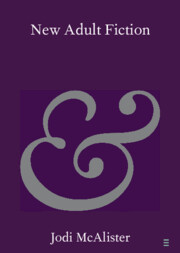Element contents
New Adult Fiction
Published online by Cambridge University Press: 22 October 2021
Summary
- Type
- Element
- Information
- Online ISBN: 9781108900737Publisher: Cambridge University PressPrint publication: 18 November 2021
References
- 4
- Cited by



